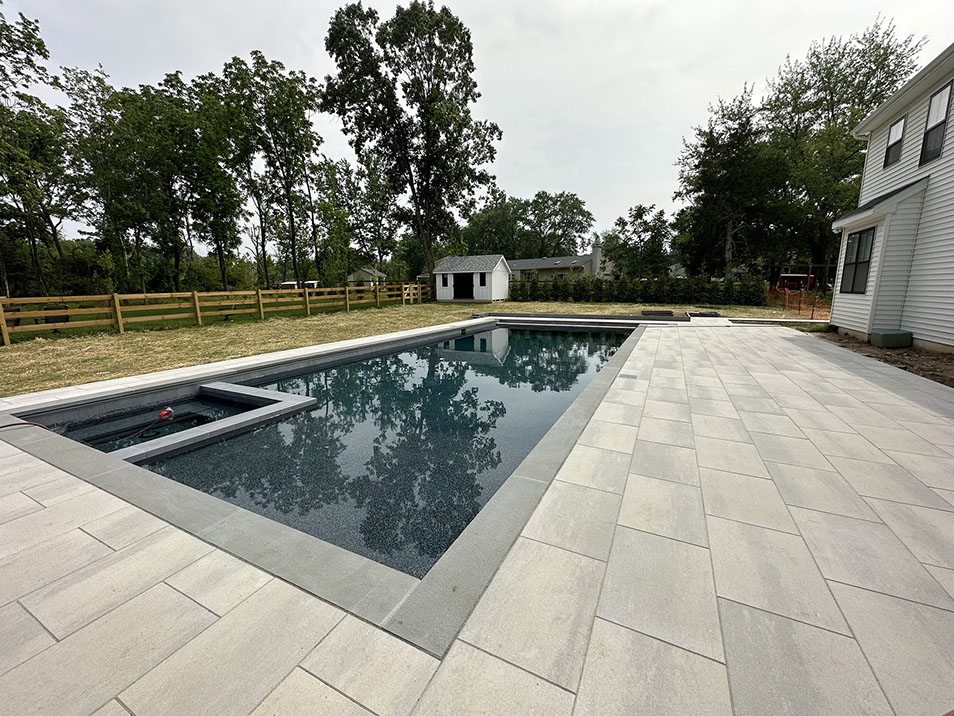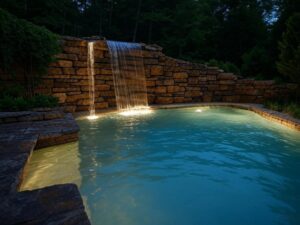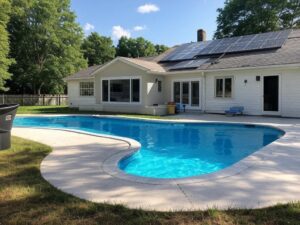Introduction
Imagine this: It’s a hot summer afternoon, and you’re lounging by your very own backyard pool, sipping lemonade while the kids splash around. Sounds dreamy, right? But before you can dive into that reality, there’s one crucial step—preparing your yard for pool installation. Proper preparation can save you thousands in repair costs down the line.
Whether you’re installing an above-ground or in-ground pool, getting your yard ready is more than just digging a hole. It’s about ensuring safety, functionality, and long-term enjoyment. Let’s break it down step by step so you can tackle this project with confidence.
Step 1: Assess Your Space and Plan Accordingly
The first step is assessing your space. Ask yourself:
- How much room do I have?
- Where will the pool be located relative to my house, garden, and other structures?
- Are there any underground utilities (like gas lines or water pipes) that could interfere?
Planning gives you a roadmap for your yard project. It helps you figure out the layout, choose the right plants, and decide where to place features like patios or lighting.
“Proper planning prevents poor performance,” says John Smith, a veteran pool contractor. “I’ve seen too many homeowners skip this step and regret it later.”
For example, homeowners in Pennsylvania may need to account for hilly terrain or clay-heavy soils, while those in Florida might focus on drainage solutions to handle heavy rains.
Pro Tip: Contact your local utility company to mark underground lines before starting any excavation work. This simple step prevents costly mistakes and keeps everyone safe. To ensure accuracy, locate underground utilities safely. For more information, explore pool permit requirements.
Step 2: Clear the Area
Once you’ve mapped out your plan, clear the area. Start by removing lawn furniture, decor, and unwanted soft-scape features like flower beds or small trees. Organic debris such as leaves, twigs, and weeds should also be removed to create a clean slate.
If grass covers the designated pool area, consider solarization to kill it naturally or use herbicides. Alternatively, rent a sod cutter for efficient removal. For eco-friendly ideas, check out sustainable pool design options.
Rocky soil or tree roots can pose challenges, especially in regions like Texas or Arizona. Plan accordingly to handle these obstacles effectively.

Step 3: Conduct a Soil Test
Soil testing is often overlooked but incredibly important. Testing reveals critical information about soil composition, pH levels, and drainage capabilities. Poor soil quality can lead to shifting ground, which may compromise your pool’s foundation over time.
Purchase a DIY soil test kit from your local hardware store or hire a professional for a detailed analysis. Learn how to conduct a soil test.
For instance, homeowners in the Midwest dealing with expansive clay soils should add gravel beneath the pool base to prevent cracking. Meanwhile, those in coastal areas like California may need to address sandy soil issues to ensure proper compaction.
Step 4: Level the Ground
A level surface is non-negotiable for pool installation. Uneven ground can cause water to pool unevenly, leading to structural stress and potential leaks. Use hand tools like rakes and shovels or heavy machinery if necessary to achieve a flat, stable base.
For in-ground pools, compacting the soil is equally vital. Rent a plate compactor to ensure the ground is firm enough to support the weight of the pool and water.
FAQ: Do I really need to level the ground for an above-ground pool? Answer: Yes! Even above-ground pools require a level base to prevent tilting or collapsing under pressure.
Step 5: Address Drainage Issues
Water management is key to maintaining both your pool and surrounding landscape. Without proper drainage, rainwater can seep into the pool area, causing erosion or flooding. Consider installing French drains or grading the land slightly away from the pool to direct water flow elsewhere.
| Solution | Cost Range | Effectiveness | Maintenance Required |
|---|---|---|---|
| French Drains | $1,000 – $5,000 | High | Low |
| Grading | $500 – $2,000 | Medium | Moderate |
| Retaining Walls | $3,000 – $8,000 | Very High | Low |
In flood-prone areas, investing in advanced drainage systems like sump pumps or dry wells can provide extra protection. Learn about water-efficient landscaping techniques. For additional insights, explore expert drainage solutions.
Step 6: Remove Obstacles and Mark Boundaries
Now that your yard is cleared and leveled, address permanent landmarks like trees, fences, or retaining walls. These elements can either enhance or hinder your pool design, so think carefully about their placement.
Use stakes and string to outline the pool’s boundaries. This visual guide helps contractors understand exactly where to dig and ensures everyone stays on the same page throughout the project.

Step 7: Choose the Right Tools and Equipment
Having the right tools makes all the difference during preparation. For smaller tasks, hand tools like rakes, shovels, and lawn levelers are indispensable. Larger projects may require renting heavy equipment like excavators or bulldozers.
FAQ: What tools are necessary for backyard preparation?
Answer: At a minimum, you’ll need a spade, rake, and trowel. If you’re dealing with grass, a sod cutter or mower will be helpful.
Step 8: Consult Professionals When Needed
While some homeowners prefer a hands-on approach, others benefit from hiring professionals. Landscapers, engineers, and pool contractors bring expertise and efficiency to the table, ensuring your yard is prepped correctly. They can also handle permits and inspections, saving you time and effort. Get in touch with experienced pool contractors.
Local regulations vary widely, so consulting a professional ensures compliance with zoning laws and building codes. Get assistance with permits and legal requirements.
Conclusion
Preparing your yard for pool installation might seem daunting at first, but breaking it down into manageable steps makes the process far less intimidating. From clearing the area to addressing drainage concerns, each stage plays a vital role in creating a safe, functional, and beautiful pool environment.
Ready to take the plunge? Start planning today and get inspired by custom pool designs. If you need guidance, don’t hesitate to contact our experts!






